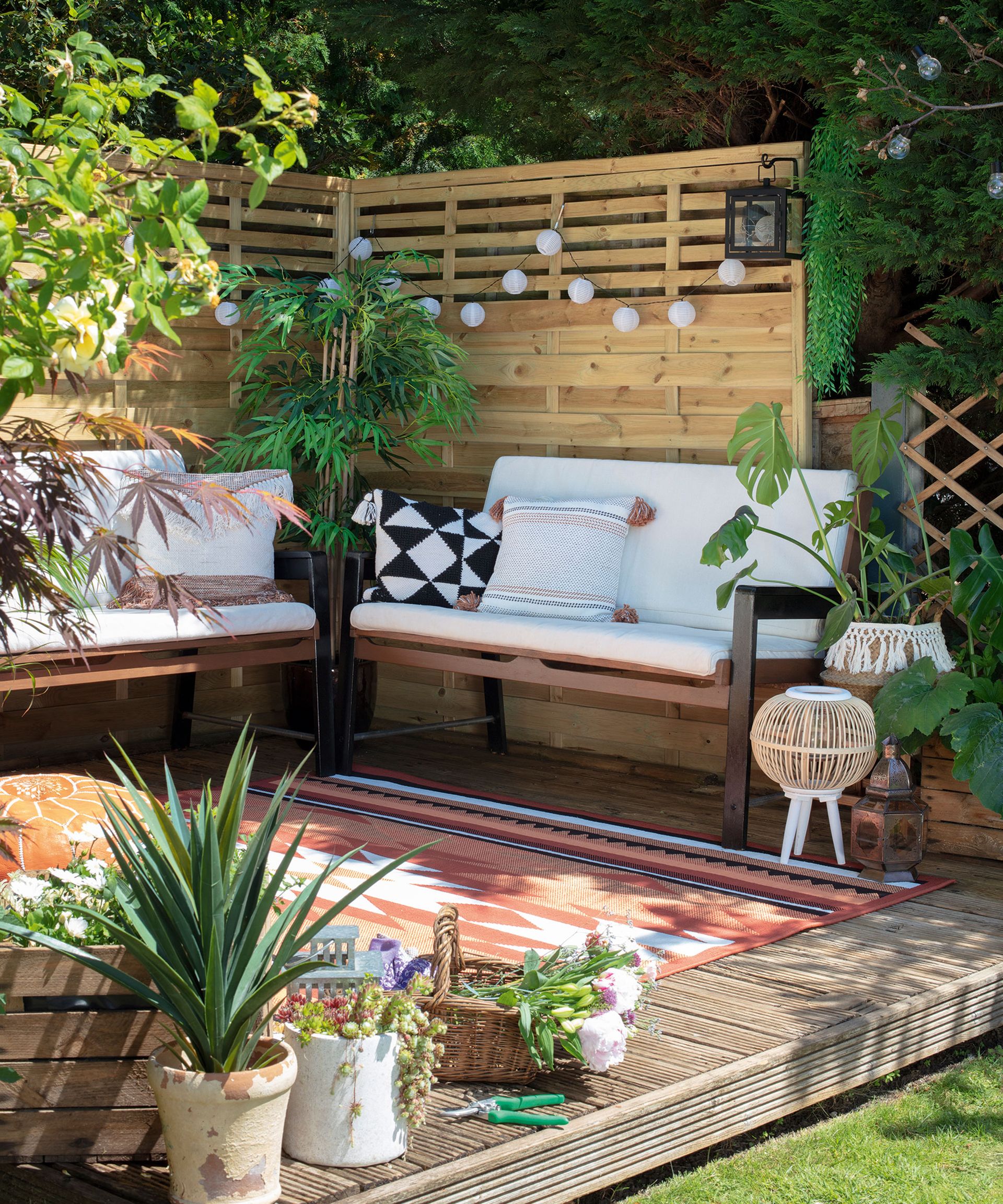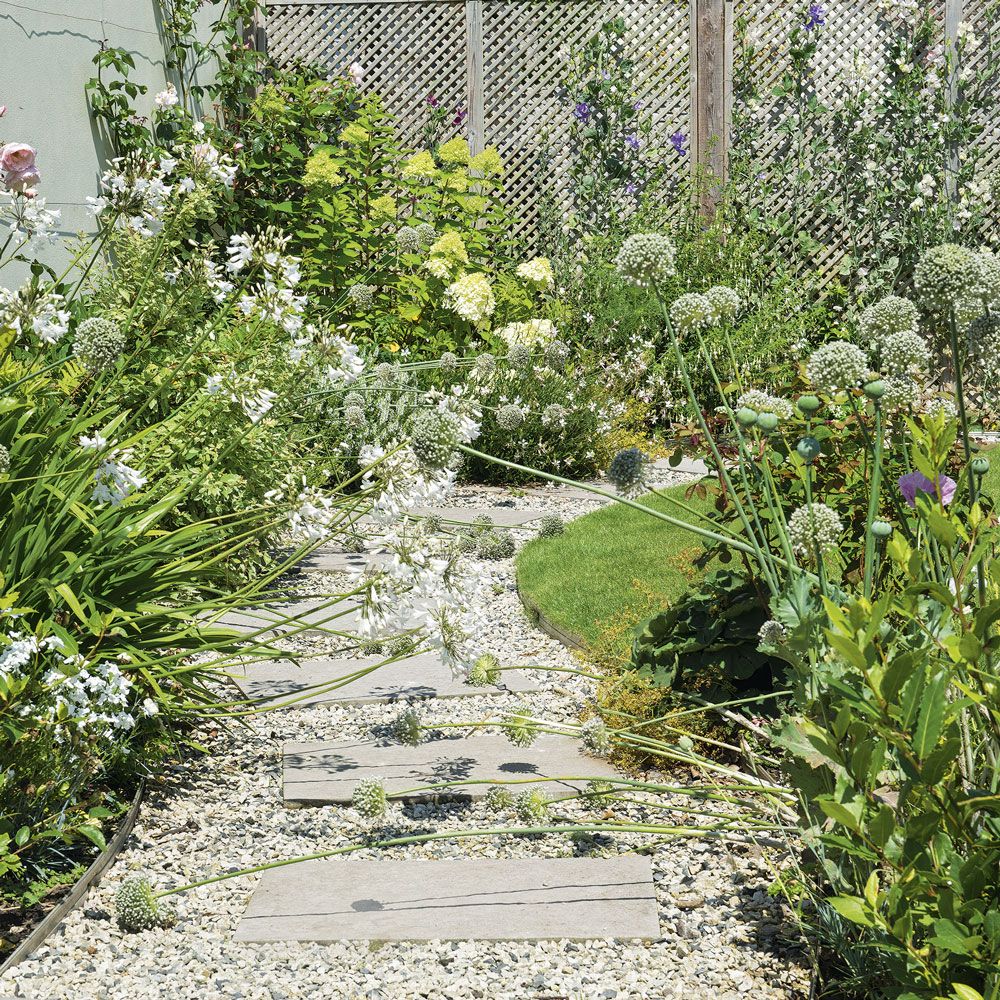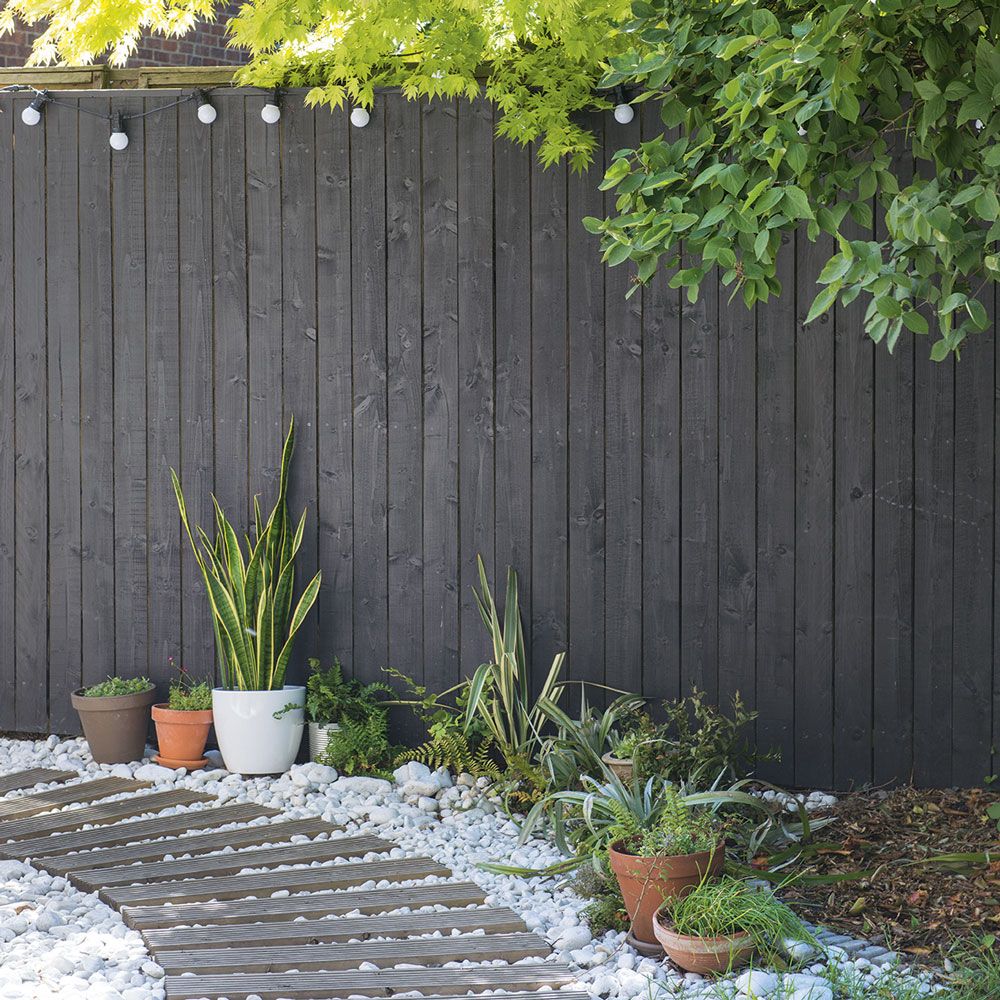Follow our top tips, as well as those from the experts, to create the perfect living space in your garden
Our outdoor spaces have become even more valuable to us over the last couple of years and with the sunshine finally here, we look to outdoor living room ideas to ensure we make the most of it.
No matter size of garden, patio or outdoor space you have, you want it to feel like an extension of your home and still have that comfortable, relaxing vibe to it. Start with seating and thinking about how you’re going to be using your space. If you’re big on entertaining, a dining set could be a good choice, or perhaps a large built-in banquette. If you’re more of a solo sun worshipper, then maybe a day bed or sun lounger will suit your space better. Whatever you choose, be sure to adopt similar planning and researching time as you would to your living spaces inside. Hopefully, this will be the area of your home you will use the most this summer.
Outdoor living room ideas
From outdoor kitchen ideas to garden seating ideas, all it takes is a little planning, design know-how and expert advice to transform your garden with an outdoor living room idea.
Whether you’re looking to extend your living space, divide what you have into zones or update the furniture, our relationship with our gardens has never been more important. Any change, big or small, can be transformative, so we asked the experts to share their insider tips and advice on where to start…
1. Layer up seating with soft furnishings

(Image credit: Future Plc/Joanna Henderson)
Just like you would in your living room, layer up your benches and armchairs will plenty of cushions for the ultimate spot for sundowners. A natural palette of neutrals and terracotta touches will work in almost any outdoor space, and will have a soothing, calming affect. Floor cushions are great for impromptu visiting friends and will add to the relaxed vibe.
2. Open up the space with a mirror

(Image credit: Future Plc/Colin Poole)
Mirrors are a great addition to any size garden, with the power to totally transform the space. Not only does it open up the space to make it seem bigger, it will reflect areas of garden that you might not be able to see from your seating spot, so allows you to enjoy more of it. Just like you would in your indoor living room, hang a mirror at a central point above your seating, or in the middle of a slim space.
3. Lay a rug over decking to add colour

(Image credit: Future Plc/Colin Poole)
If our outdoor space is lacking slighting on colourful plants and flowers, a great way to introduce more, is with an outdoor rug. While a heavier blanket will work better on a lawn or grassed area, a rug is the perfect addition to a patio or decked space. Outdoor rugs are made with different fibres to their indoor counterparts, so they should with stand most weathers through-out the summer, but will need to be rolled up and stored over winter.
4. Combine a dining and living space

(Image credit: Matalan)
Buy now: Ibiza shell texture planter, £15, Matalan(opens in new tab)
Let’s face it, as soon as the sun makes an appearance, we want to spend as much time outside as possible, whether its at meal times, working in the shade or chilling with a good book. So create a space to combine all these things with an open-plan living and dining space. Bench seating is great for squeezing on several small bums, so ideal for family meal times. Armchairs and coffee tables will bring a reading nook vibe and layered rugs will keep toes cosy come sunset.
5. Utilise a parasol to keep things cosy

(Image credit: Future Plc/Claire Lloyd Davies)
While a parasol will be great for blocking out direct sunlight during the day, it will also help to keep things cosy and intimate come the evening. It acts as a little ‘roof’ to your outdoor living space, keeping in the warmth of candles or patio heaters and will also act as protection should an evening shower hit. It’s one of the most simple but effective outdoor living room ideas.
6. Choose outdoor furniture that can be used inside too

(Image credit: QVC UK)
Buy now: Faux bamboo indoor/outdoor armchair, £240, QVC UK(opens in new tab)
Just because outdoor furniture has the word ‘outdoor’ in it, doesn’t mean you can’t use it inside too! Mary Bunting, buyer at QVC(opens in new tab) says, ‘Go for furniture that wouldn’t look out of place in a living room or a conservatory. Outdoor suitable materials are key as they are more durable and suitable to be left outdoors, but can also be used inside too.’
Rattan, cane and woven furniture are all popular choices for both inside and out and will work in both spaces through out the year.
7. Break up the space with levels

(Image credit: Future Plc/Colin Poole)
‘If you have existing level changes, it’s best to work with these rather than fight them,’ says landscape and garden designer Tom Massey, director of Tom Massey Studio(opens in new tab).. ‘Retaining walls can be very expensive. If your garden is flat, adding levels will add costs, but also interest and excitement to the space. If you were going to excavate a pond, then you could use the spoil to create a mound. Thinking creatively and limiting material taken off site is a good way to save money and lower the environmental impact of the build.’
8. Create a seamless flow

(Image credit: Future Plc/Colin Poole)
‘Connecting different links between spaces enhances the sense of rhythm and flow. Try using a limited palette of hard materials, or drifting key plants between different areas of planting,’ says Tom.
Stylist Selina Lake (opens in new tab)adds: ‘I’m not sure they always need to connect visually – you could decide on a different planting scheme for each zone – think scented herbs for somewhere to sit and relax, wild grasses and wildflowers for a charming dining space, or a Scandi-style seating area with all-white flowers.’
9. Extend the interior decor

(Image credit: John Lewis & Partners)
Extend your indoor space by dressing your outdoor living area with thoughtful furniture choices and accessories – such as armchairs and cushions. Woven rugs, like the jute rugs pictured above, are a great decor option for grassless garden ideas.
10. Define with edges and boundaries

(Image credit: Future Plc/Annaick Guitteny)
‘A mixed boundary with some planting, some screening and perhaps some features like integrated sculptural elements can add interest,’ says Tom. ‘Boundaries can end up costing a lot of money, especially in larger gardens where the linear meter rates stack up.’
11. Illuminate with an outdoor lighting scheme

(Image credit: Future Plc/Joanna Henderson)
‘Festoon lights can be left out all-year-round and provide an easy and inexpensive way of adding magic to any outdoor space, while solar stake lights or path markers are a great solution of lighting your garden without plugs or wires,’ Tom adds.
‘The most simple and effective thing to do is to uplight trees – this looks dramatic and gives an ambient level of light. Too much lighting though and your garden can feel tacky and overblown.’
12. Enjoy alfresco mealtimes by creating an outdoor dining area

(Image credit: Dobbies)
‘Start with location,’ says Tom. ‘Ask yourself if you want morning or evening sun? Do you need shade/prefer to dine in the shade? What about proximity to the house? You could put the dining terrace at the end of the garden, rather than right outside the house, meaning you go on a journey to get there, making it more of an event and experience.
Selina adds: ‘The very nature of dining al fresco evokes a relaxed, informal mood – I’d always choose a lovely spot in the garden over a practical decision. I have a mini meadow area near the bottom of my garden, and I happily carry all the tableware there as it’s such a charming spot.’
13. Add shade to make the space more versatile

(Image credit: Dobbies)
Get more from your outdoor living room by incorporating an element of garden shade, such as awnings and pergolas. Being able to shade the space during the hottest parts of the day will mean the area is available to use throughout all hours of the day.
‘Always ask “do I need it”,’ advises Tom. ‘In a shady garden, one will just add more shade, but on a sunny terrace, a pergola can make it useable in hot weather. It’s not always nice to sit in direct hot sun’.
14. Be thoughtful with hard landscaping

(Image credit: Future PLC/Colin Poole)
‘Hard landscaping is a good idea for connecting areas,’ says Tom, ‘but this can be loose and informal, such as a planted gravel pathway, stepping-stones or floating timber boardwalk. Think beyond paving – it’s not always the best solution and it is high cost too.’
15. Purposely use paint outside

(Image credit: Future Publishing PLC/ Colin Poole)
‘If you have an existing fence, painting it black makes it recede and can make the space feel bigger,’ says Tom. ‘Planting is also offset by the dark backdrop. Painting is cheap and can make a big difference, but remember if you paint it once, you will need to paint it again and will result in ongoing maintenance.’
‘Exterior paints and wood stains are great for revamping tired furniture – try painting black for a Scandi feel’ advises Selina. ‘For walls, a newly-built wall painted white is a great way of reflecting light, but I’d never paint an old, weathered wall – that would be a shame.’
16. Create a sense of calm with a water feature

(Image credit: Future Plc/Colin Poole)
‘The sound of running water is so relaxing. Look for one that is just “plug and play” without any complicated set-up needed, or even an outdoor tap,’ says Dani Taylor, creative director at Cox & Cox(opens in new tab)
17. Give your outdoor space a focal point

(Image credit: Future PLC/Joanna Henderson)
‘Tables are great for adding interest,’ says Selina, ‘but I’m not talking about a dining one, rather a side table that can be used to create displays with planters or collections of gardenalia. I love a vintage metal folding table, which can be moved to the perfect spot each season, ready for a new display.’
Tom suggests a tree; ‘One can be a fantastic sculptural element and cost a fraction of the price of an actual garden sculpture. Look for trees with multi-stem form and seasonality, such as hawthorn, crab apple or Amelanchier species.’ Dani adds; ‘A fire pit also makes a great focal point.’
18. Add a fire pit to make the space suitable for all seasons

(Image credit: Future Plc/Colin Poole)
Whether you choose to build a permanent solution or buy a moveable design a fire pit makes an outdoor living room more versatile. No matter how chilly the evenings get, sitting around a warming fire makes the space more useable throughout the entire year. ‘A fire pit is great to sit around with the family, toasting marshmallows or cooking sausages, and is the perfect excuse to get everyone outside,’ says Dani.








